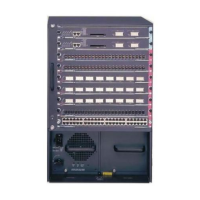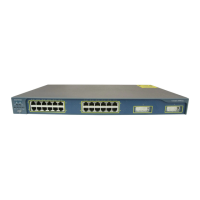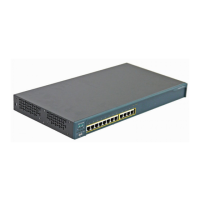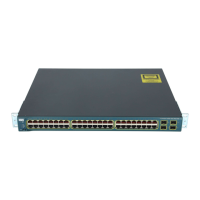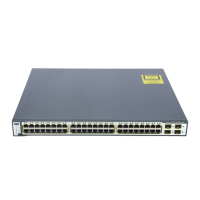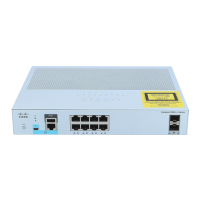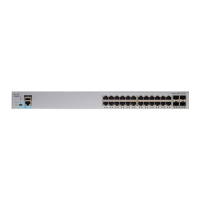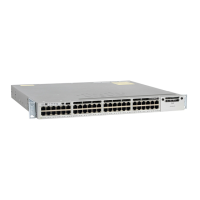54-8
Catalyst 6500 Series Switch Software Configuration Guide—Release 8.7
OL-8978-04
Chapter 54 Configuring ASLB
Configuring ASLB on the Switch
ASLB Configuration Guidelines
This section lists the usage guidelines and restrictions for configuring ASLB:
• Routers, page 54-8
• Servers, page 54-8
• IP Addresses, page 54-9
• Supervisor Engine, page 54-9
• Backup LocalDirector Configuration (Optional), page 54-9
• MSFC and Multilayer Switching, page 54-10
• NetFlow Data Export, page 54-10
• VLANs, page 54-10
• Switch Port Configuration, page 54-10
For configuration examples, see the “ASLB Configuration Example” section on page 54-18. If you run
into problems during your configuration, see the “Troubleshooting the ASLB Configuration” section on
page 54-25.
Routers
The router configuration guidelines are as follows:
• The router must be the default gateway for the servers that are being load balanced, and its MAC
address must be known.
• Multiple routers must be on the same router VLAN. Specify all the participating router MAC
addresses by entering the set lda mac router command.
• When ASLB is configured, a VLAN access control list (VACL) is created to redirect the TCP traffic
on the two VLANs to which the LocalDirector is connected; no security Cisco IOS access control
lists (ACLs) or VACLs can be configured on these VLANs.
Servers
The server configuration guidelines are as follows:
• The servers must be either directly attached to the switch or within the same bridging domain as the
LocalDirector port in the server VLAN.
• Configure the server default route as the aliased address of the router that is on the same subnet as
the real IP address of the server.
• Configure the servers to ignore the ARP requests for the virtual-IP address. On some server
operating systems, you cannot disable the responses to the ARP requests on the alias (secondary) IP
addresses. Use the static ARP entries at the routers as a workaround for the servers that respond to
the ARP requests for the virtual-IP address.
Caution To accelerate the client-to-server traffic, you must configure the servers to ignore the ARP requests for
the virtual-IP address. If you fail to do this step, traffic acceleration does not start, and fully redundant
topologies in your network take a long time to recover from a LocalDirector failure.
